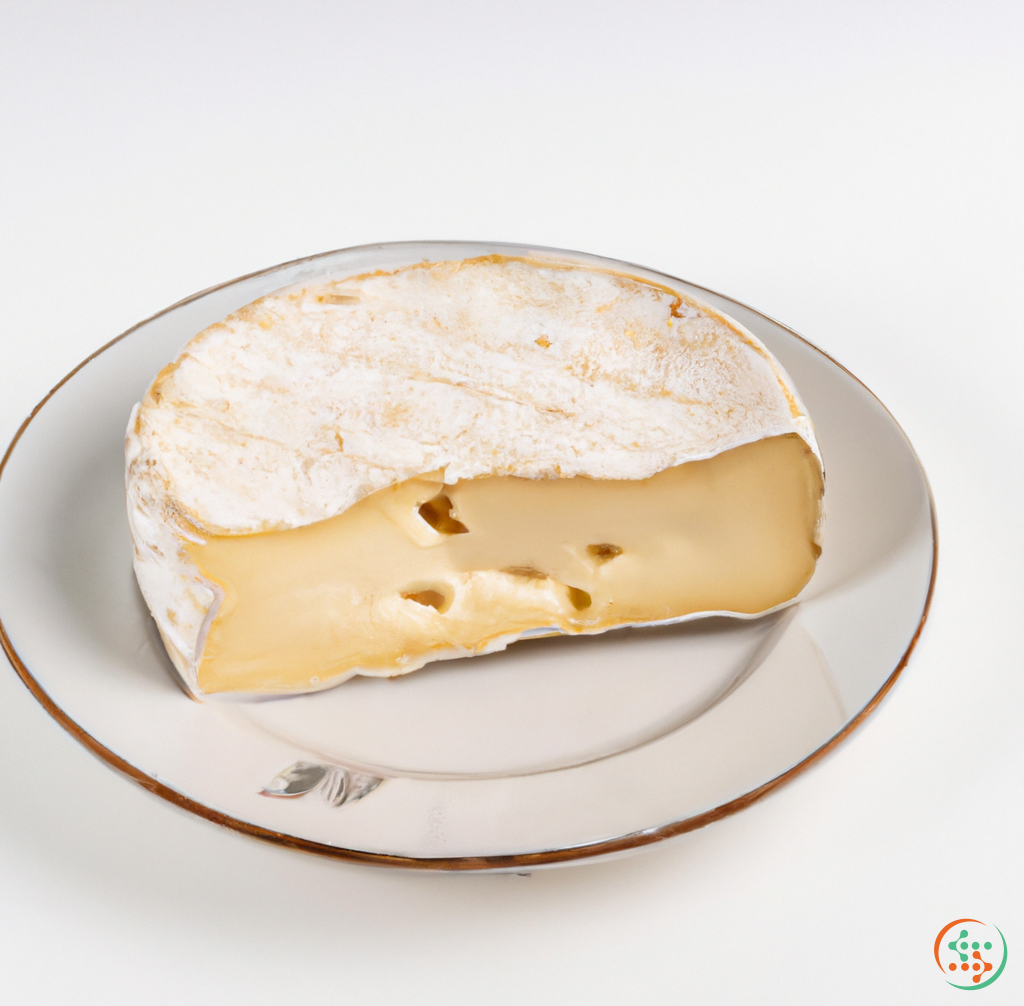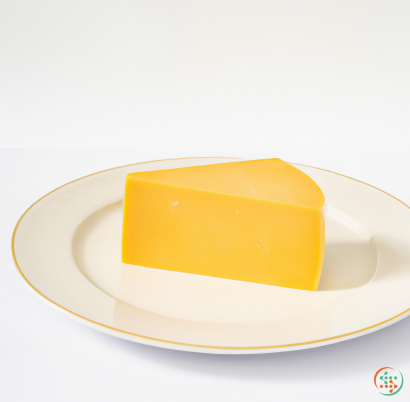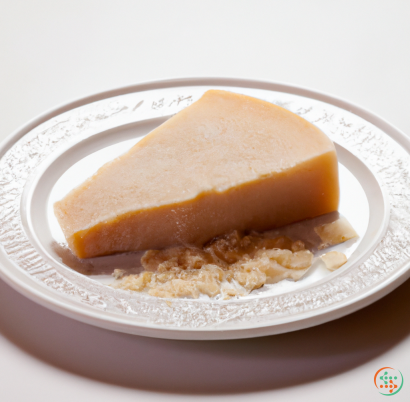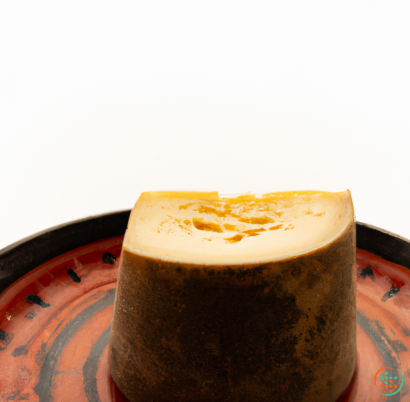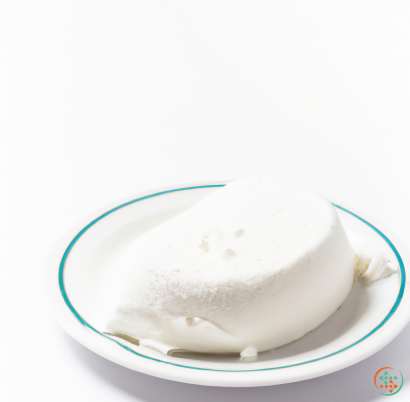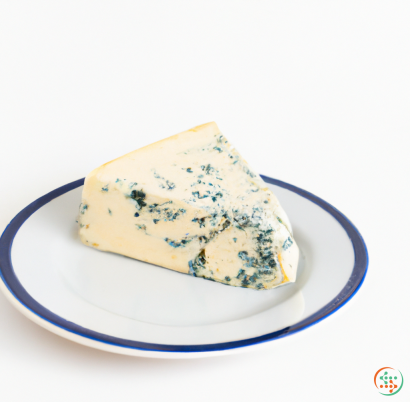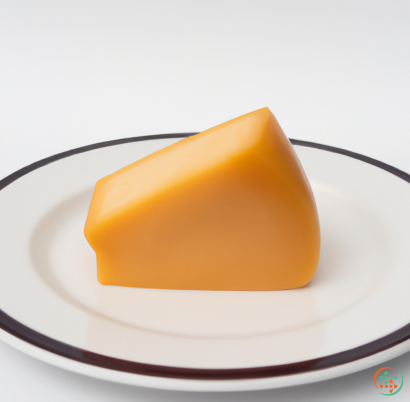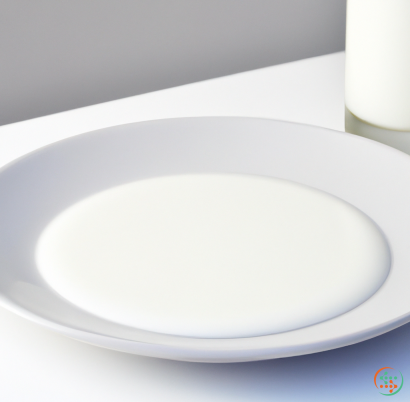Neufchatel Cheese
Ah, the magical powers of cheese! Let’s face it, there’s almost nothing that can’t be improved with a helping of cheese. From melting over vegetables to grilled between two pieces of bread, cheese just makes everything better. One type of cheese that frequently contributes to this tasty goodness is Neufchâtel (pronounced “NOO-shah-tel”), a soft, creamy French cheese. By doing a deep dive into its origins and composition, you’ll come to better understand why it’s so beloved.
Neufchâtel is a French cheese which originated in the village of Neufchâtel-en-Bray in the north-western part of France. It is believed that monks from the area began crafting the cheese in the 16th century. Neufchâtel is classified as a soft, pressed cheese and is related to other French and Belgian cheeses such as Boursault and Boursin.
The cheese is shaped like what one might refer to as a heart- or even a tractor tire—it has six sides and has the traditional ridges around the edges. It is very recognizable in shape, thanks in part to its long history and popularity in France. The cheese is ripened for between 1.5 and 3 months, giving it an ivory-colored rind with yellowish patches.
To make Neufchâtel, full-fat cow's milk is heated and combined with lactic-acid producing cultures, enzymes, and mold spores. When these ingredients are combined, the process of making the cheese begins. The curd that forms is then poured into cheese molds which gives it the distinctive 6-sided shape. Once the cheese molds are filled, they are pressed to remove additional moisture and left to age.
When it comes to tasting Neufchâtel cheese, its flavor profile is complex and deeply satisfying. It’s buttery and tangy with a subtle nutty flavor. The texture is soft and creamy, making it perfect for spreading on crackers or as a sandwich filling. Neufchâtel can also be grated over vegetables and salads or added to your favorite pasta dish for an extra special touch.
As for nutritional content, Neufchâtel is a great source of calcium and protein. It is also lower in fat than other cheeses, with about 20 percent fat content. This makes it an excellent option for those looking for a cheese that’s low in calorie but still provides a lot of flavor.
Now that you’re more familiar with this delightful offering from France, it’s time to try it out. Neufchâtel can be found in most grocery stores and can also be purchased online. If you’re looking to explore beyond the traditional, you can also find flavored varieties such as garlic herb, cracked pepper, and smoked Gouda. Just remember, when it comes to Neufchâtel, it really is all about the flavor and texture. So, go explore and spread the French cheese love. Bon appétit!
The ancient origins of Neufchatel cheese date back to the 8th century in Neufchatel-en-Bray France. There it was acclaimed for its creamy taste, delicate texture, and complicated production process. Fast forward to today and Neufchatel cheese has become an internationally enjoyed favorite, found in grocery stores from France to Pennsylvania. But what exactly does it take to transform simple milk and cream into a tasty, sliceable cheese? In this article we'll explore exactly how Neufchatel cheese is created and travels to a dinner plate.
The creation of Neufchatel cheese starts by sourcing the best raw ingredients. Milk and cream must be obtained from local or nearby farms, so they can be whisked away directly to the creamery. The creamery is where the cheese-making process begins. Milk is poured into traditional copper vats and heated to 84°F (29°C). Then natural bacterial cultures, along with liquid rennet, are added to coagulate the milk proteins. This process takes around fifteen minutes, after which the cheese is carefully cut into small pieces called curds.
The curds are then drained of whey, a high protein liquid, through a sieve. Once the whey is drained from the curds, the curds are collected. The next step is to add a certain amount of salt for flavor and texture, about 1%; the precise amount will be determined by the Neufchatel cheese maker’s personal recipe. Then, the cheese maker kneads the curd with their hands to get rid of any lumps, as well as break down large pieces. This kneading process releases moisture from the curd, making it more manageable.
The cheese then gets its signature shape, with the help of a special wooden mould (sometimes called a Neufchatel “stamp”). Most moulds are the same shape, but can vary in size; the average Neufchatel is around 2 inches (5 cm) deep, 2 inches (5 cm) wide and 10 inches (25 cm) long. After the curd has been placed into the wooden moulds and pressed firmly together, the remaining whey is drained off and the Neufchatel takes its definitive shape — similar to a small, round loaf of bread.
At this point in the process, the cheese needs to be drained and ripened. The cheese is placed on matting and is regularly turned and salted to evenly distribute the salt and flavours. This draining and salting process can take between one to three days, depending on the desired result. Once it is ripened to the desired stage, the cheese can be stored and transported.
When it arrives at the general store or supermarket, the Neufchatel is usually packaged in a wax paper wrapper, which keeps the cheese fresher for longer periods of time. After purchase, the cheese needs to be stored in the refrigerator. It is important to remember not to freeze Neufchatel or it will lose its texture and may develop an undesirable texture. The cheese can last four to six weeks if stored properly, although the best taste and texture are experienced within a few weeks of purchase.
When it arrives at the dinner plate, most people will prepare the cheese by slicing or grating onto salads, sandwiches, or toast. After being sliced, the cheese can also be melted easily, as it has a low melting point. This can give dishes a delicious cheesy flavor and creaminess that is perfect for making a variety of dishes such as macaroni and cheese, melted sandwiches, quesadillas and more.
From the raw ingredients to the final destination, Neufchatel cheese has quite the journey. First, cows supply the raw milk and cream that is transformed in the creamery into curds and pressed into Neufchatel cheese. Then, the cheese is salted and aged, before being wrapped and purchased at markets. Finally, it is stored, later making its way to the dinner table ready to be enjoyed by all.
| Vitamin A | 0.241 mg | |
| Beta-Carotene | 0.027 mg | |
| Vitamin E | 0.4 mg | |
| Vitamin K | 0.0017 mg | |
| Vitamin B1 | 0.02 mg | |
| Vitamin B2 | 0.16 mg | |
| Vitamin B3 | 0.21 mg | |
| Vitamin B5 | 0.58 mg | |
| Vitamin B6 | 0.04 mg | |
| Vitamin B9 | 0.014 mg | |
| Vitamin B12 | 0.3 ug |
| Calcium | 0.117 grams |
Daily Value 1.3 g
|
| Iron | 0.13 mg |
Daily Value 0.018 g
|
| Magnesium | 0.01 grams |
Daily Value 0.4 g
|
| Phosphorus | 0.138 grams |
Daily Value 1.25 g
|
| Potassium | 0.152 grams |
Daily Value 4.7 g
|
| Sodium | 0.334 grams |
Daily Value 2.3 g
|
| Zinc | 0.82 mg |
Daily Value 0.011 g
|
| Copper | 0.03 mg |
Daily Value 0.9 mg
|
| Manganese | 0.01 mg |
Daily Value 0.0023 g
|
| Selenium | 0.003 mg |
Daily Value 0.055 mg
|
| Tryptophan | 0.106 grams | |
| Threonine | 0.359 grams | |
| Isoleucine | 0.501 grams | |
| Leucine | 1.013 grams | |
| Lysine | 0.875 grams | |
| Methionine | 0.294 grams | |
| Cystine | 0.064 grams | |
| Phenylalanine | 0.448 grams | |
| Tyrosine | 0.468 grams | |
| Valine | 0.609 grams | |
| Arginine | 0.363 grams | |
| Histidine | 0.27 grams | |
| Alanine | 0.283 grams | |
| Aspartic Acid | 0.794 grams | |
| Glutamic Acid | 2.013 grams | |
| Glycine | 0.218 grams | |
| Proline | 1.027 grams | |
| Serine | 0.577 grams |
| Lactose | 3.19 grams |
|
| Total Sugars | 3.2 grams |
per 100g
|
| Caproic acid (6:0) | 0.21 grams |
|
| Caprylic acid (8:0) | 0.24 grams |
|
| Capric acid (10:0) | 0.55 grams |
|
| Lauric acid (12:0) | 0.61 grams |
|
| Myristic acid (14:0) | 2.03 grams |
|
| Palmitic acid (16:0) | 5.63 grams |
|
| Stearic acid (18:0) | 2.56 grams |
|
| Arachidic acid (20:0) | 0.03 grams |
|
| Butyric acid (4:0) | 0.61 grams |
|
| Total Saturated fatty acids: | 12.47 g | |
| Oleic acid (18:1) | 5.33 grams |
|
| Palmitoleic acid (16:1) | 0.3 grams |
|
| Total Monounsaturated fatty acids: | 5.63 g | |
| Omega-3 Alpha-linolenic acid (18:3) | 0.12 grams |
|
| Linolenic acid (18:3) | 0.12 grams |
|
| Linoleic acid (18:2) | 0.7 grams |
|
| Total Polyunsaturated fatty acids: | 0.94 g | |
| Cholesterol | 0.07 grams |
|
| Total Sterols: | 0.07 g | |
